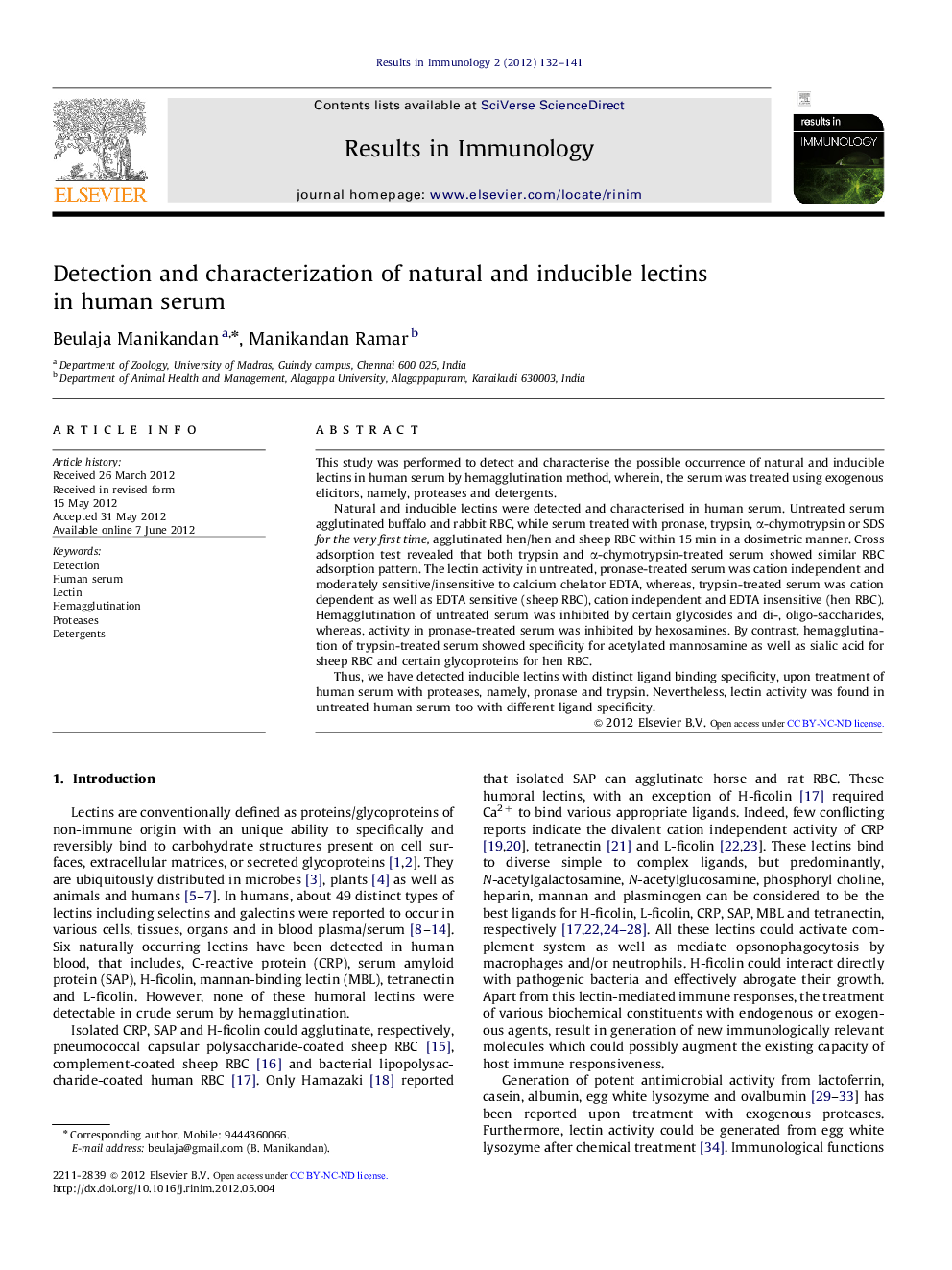| Article ID | Journal | Published Year | Pages | File Type |
|---|---|---|---|---|
| 2202435 | Results in Immunology | 2012 | 10 Pages |
This study was performed to detect and characterise the possible occurrence of natural and inducible lectins in human serum by hemagglutination method, wherein, the serum was treated using exogenous elicitors, namely, proteases and detergents.Natural and inducible lectins were detected and characterised in human serum. Untreated serum agglutinated buffalo and rabbit RBC, while serum treated with pronase, trypsin, α-chymotrypsin or SDS for the very first time, agglutinated hen/hen and sheep RBC within 15 min in a dosimetric manner. Cross adsorption test revealed that both trypsin and α-chymotrypsin-treated serum showed similar RBC adsorption pattern. The lectin activity in untreated, pronase-treated serum was cation independent and moderately sensitive/insensitive to calcium chelator EDTA, whereas, trypsin-treated serum was cation dependent as well as EDTA sensitive (sheep RBC), cation independent and EDTA insensitive (hen RBC). Hemagglutination of untreated serum was inhibited by certain glycosides and di-, oligo-saccharides, whereas, activity in pronase-treated serum was inhibited by hexosamines. By contrast, hemagglutination of trypsin-treated serum showed specificity for acetylated mannosamine as well as sialic acid for sheep RBC and certain glycoproteins for hen RBC.Thus, we have detected inducible lectins with distinct ligand binding specificity, upon treatment of human serum with proteases, namely, pronase and trypsin. Nevertheless, lectin activity was found in untreated human serum too with different ligand specificity.
